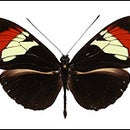Introduction: Kite Boarding Bar
Carbon fibre tangle free spinning bling blingin kite control system with integrated handles and manually activated release mechanism, now with colour coded leaders.
Step 1: Parts List
1/4" double braid for rear leaders.
Bungee and sheath for safety leash.
Longhorn or similar bar. 3/8" center line, double braid is a must.
Slingshot swivel for the top of the adjuster.
Junior ClamCleat for the adjuster.
1" ss ring for the top of the leash.
1 snap for the bottom of the leash.
2" ss ring for the bottom of the center line.
Slingshot adjustable stopper for center line.
See second image for details of the QR assembly
Step 2: Put It Together
Work from the bottom up and then out. Bowline the ring to the bottom.
Step 3: Work Out the Dimensions to Suit Your Build
First work out the comfortable distance that you want your arms to be holding the bar. You do not want to spend long periods of time riding bent over hanging on the to bar, too far away. If it is too close to you then you wont have any sheeting. The final measurements will depend on your kite and arm length. Most riders on normal 4 line kites enjoy a sheeting range between 6-10"
Step 4: Adjuster Construction
Once you know your sheeted out distance you must make your adjuster long enough so you can adjust in when riding unhooked. I use a Junior Cleat with a ss bolt, washer with teeth and lock nut through the center line. Pass the line up through the Slingshot ss swivel (sometimes refered to as the 'mickey mouse' or just 'mouse' swivel) and back down through the cleat mouth. Finish off with a stopper ball.
Step 5: Figuring Out the Rear Leaders and Some Caveats
Once you have worked out the total length of your center line from the QR ring to the slingshot swivel you can cut your rear leaders and attach them to the bar. The general rule of thumb (again depends on the kite) is that with the adjuster 3/4 to fully out/powered and the bar against the slingshot adjustable stopper ball (or 'bar against the stopper/knot') both leaders and the center line are of equal length.
An important design factor that should be taken in to consideration when building a bar is what it 'interfaces' to. Some manufacturers sell setups where the rear and front lines are of different length. This causes a lot of issues for riders who accidentally rig lines the wrong way around or for riders who mix and match chicken loop/pulley bars with different kites.
My rule of thumb is where there is an 'interface' everything should be equal. All pigtails hang down equidistant from the kite. All four kite lines are of equal length. With the bar in normal powered setup the rear leaders and center line should be of equal length.
When you switch from kite to kite you do not have to double check any kite specific pigtail knots or rear leader knots, reducing the risk of injury. When making up a replacement line set (q-power pro recommended) you simply need to make four equal lines etc etc. When re-stretching lines you do not need to worry how much you need to stretch the other pair of lines.
JUST MAKE EVERYTHING EQUAL!!!
Step 6: Construct the QR.
Cut the bottom of a wichard snap shackle and one end off an rf78 bearing swivel. Weld the two together. Add a snap to the bottom for attaching to the d bolt you've welded on to your spreader.
An important but small detail is the distance between the two toggles on the wichard. Too long and they catch on stuff and trigger the qr open, too short and any little touch will trigger the QR. I recommend a distance of 1" between them, the qr will still trigger accidentally but for my it happens about once a season now with 100% reliability for intentional use.
Details of the parts are in the image but if you arent able to weld stainless you can build a simple chicken loop with donkey dick on the bottom of the wichard shap shackle













